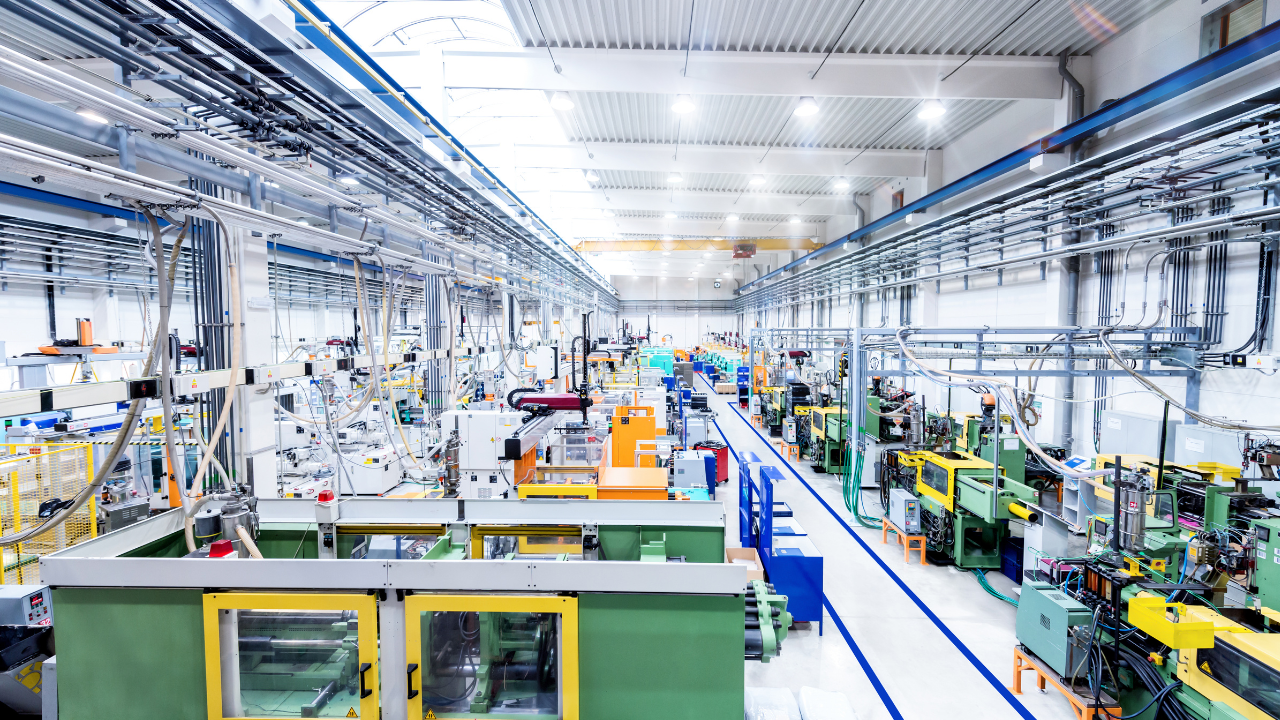Much has been written about the potential impact of AI across all aspects of the enterprise, including Enterprise Asset Management (EAM). EAM includes the management, support, and maintenance of a company’s physical assets throughout their lifecycle. This lifecycle encompasses capital planning, procurement, installation, performance, maintenance, repair, regulatory compliance, risk management, and asset decommissioning and disposal. According to recent research from our team, only 7% of respondents have “completed” AI/ML deployments in EAM, while many are planning deployments in the next two years.
Although the true impact of AI in EAM is yet to be seen, the present time offers an opportunity to explore and experiment with potential use cases. Predictive AI and generative AI are the two types of AI most relevant to asset management. While predictive AI uses historical data to predict future events or behaviors, generative AI creates new content such as text, audio, video, code, or images.
A predictive AI example use case could involve a visual asset inspection, where a mobile camera captures asset images that are automatically analyzed for defects or anomalies and triggers an alert or workflow in case of a defect.
On the other hand, generative AI use cases could include a conversational front-end to maintenance documentation like manuals, operating procedures, and installation guides; or a maintenance virtual assistant or chatbot that guides maintenance personnel through work tasks. One could also explore developing pre-defined templates to report asset issues based on the equipment type.
Food Manufacturing Use Case
A global food manufacturer has been experimenting with AI for about two years. The company operates in both CPG and agriculture, since it farms and grows its own raw materials, and also sells finished products to wholesalers.
One of the first AI use cases at this manufacturer was with the company’s tractor fleet. They gathered all the data that’s readily available from those types of vehicle assets like engine use, oil use, tire pressure, and amount of gasoline used, fed it all into a data lake, processed the data, and drove better decisions regarding the utilization of the fleet and the consumption of materials like gas, oil and tires.
“Rather than relying on human decision-making, our approach was to collect the output data from the machinery into a data lake. We then analyzed this data through AI to examine various scenarios, such as altering tractor routes, opting for fields of different lengths, or changing the turning points of the tractors under varying conditions like dry or wet terrain. These factors significantly affect tractor mobility, usage efficiency, and resource consumption,” explained the Director of Cloud Services at the company. “We integrated this data with Power BI to create comprehensive dashboards, which significantly informed our decision-making process.”
Data centralization was one of the biggest advancements for the company as a result of the tractor project. Traditionally, most of the asset information from the farms was stored on-site using various computing systems, including desktops, laptops, and custom-built servers. In an initiative to centralize data storage, management, processing, and analysis, the company implemented a Microsoft Azure Data Lake and selected Synapse for data processing tasks. The company has since hired two data scientists who are dedicated to developing and refining the data models.
Building a Foundation
Companies typically start with AI in EAM where this food manufacturer started, with predictive AI use cases to drive better decisions around asset throughput, utilization, and performance. This is consistent with the experience of Unvired, a certified SAP partner providing Connected Worker solutions with in-depth experience in mobile asset management/plant maintenance, field service, digital forms, and inventory /warehouse management-related business processes.
One of Unvired’s customers is a US-based manufacturer of industrial ropes that have to be routinely inspected and rated in terms of wear. These inspections were typically performed manually, but with workforce and knowledge attrition, the company consulted Unvired to find a solution that reduced dependence on human knowledge and resources. Unvired’s solution integrated a machine learning model with a mobile device for inspection that could generate insight based on a picture of the rope.
“We had to solve for how you keep this ML model updated regularly,” said Alok Pant, CEO of Unvired. “There’s model drift. New input is coming, so models drift over time. So, the challenge is how do you keep the ML model updated on the server side and then bring it down to the mobile device seamlessly. This is what we call ML ops.”
Results came in the form of decreased time to resolution and cost of service, and improved customer experience. The company is now exploring additional revenue-generating services based on an enhanced rope assessment and experience.
This asset inspection use case is a perfect user case for automation and AI. Unvired encountered a scenario with a different client where field technicians would photograph the asset and forward it to an expert at the headquarters, only to find out frequently that the image’s quality was too poor to determine if repairs or upkeep were needed. To address this, Unvired has explored Google Vertex AI, employing a Google API that assesses the photos for clarity instantaneously. This ensures that only images that meet AI-enabled quality standards are transmitted to the corporate office, optimizing the decision-making process.
Proving Ground
In the case of the food manufacturer mentioned above, the newly appointed Chief Technology Officer tasked the Director of Cloud Services to lead all AI initiatives for the company. This individual just recently put together an AI charter, which includes a provision for a committee that will administer an AI ideation pipeline and determine feasibility, cost and benefit of all potential projects. With a vast array of machinery to consider, a primary concern is prioritizing efforts. Among the more maintenance-intensive equipment are pumps, which require frequent attention due to their many components and the critical nature of their Mean Time Between Failure (MTBF) performance. In the past, pump performance data was recorded manually on clipboards. However, with AI, there is a move to digitize this information, aggregate it in the SAP system, and apply AI techniques to enhance pump performance and predict potential malfunctions and breakdowns.
Another application of AI in asset management at this company is in the area of video analysis. The company has always captured video of personnel operating equipment for safety and security purposes, but has not always been able to dedicate the resources required to review and analyze footage. Now the AI champion is leading an effort to use AI to analyze video in batch mode and identify instances of personal protective equipment (PPE) violations among employees, which present serious health and safety issues in a food manufacturing environment.
Embarking on Generative AI
To aid companies like this food manufacturer in the journey from predictive AI to generative AI in the asset management space, Unvired has developed three out-of-the-box generative AI applications under the brand name Eureka. The first is a knowledge assistant that enables contextual search of proprietary data sets and document processing. The second is natural language reporting that allows users to issue a command like “show me my maintenance orders for the past four weeks” and it will hit the database and return the results. The third are autonomous agents that leverage a large language model (LLM) to determine three or four tasks to do without any prompting.
Unvired has customers who are pursuing generative AI proofs-of-concept leveraging Eureka’s capabilities. One of these POCs involves the search of maintenance procedures and installation manuals. The scope included taking thirty PDF documents, breaking them into chunks, and putting those chunks into a vector database. Then, an LLM – whether it is Google Vertex AI or OpenAI – acts on the vector database and can return answers to natural language queries about maintenance and installation. “So, you can say, ‘how do I repair a pump, which is from Pratt and Whitney,’ and the exact answer will come. It is searching off your maintenance documents using generative AI and getting really precise answers,” said Pant.
For Unvired, Eureka offers out-of-the box accelerators. But that is just the beginning. Looking ahead, the company is building a team to develop custom AI applications that solve specific customer pain points in asset and plant maintenance and performance. The team is also co-innovating with partners to build domain and sub-domain specific competencies that automate workflows that are common to individual industries.
What this means for ERP Insiders
Build a bridge with mobile applications. Oftentimes, digitizing data is the first step to getting ready for AI in asset management operations. One way to begin to record data digitally is to equip frontline workers with mobile applications and digital forms so they can move away from paper-based processes and manage work orders, inspections, work permits, checklists, safety observations, etc. directly on a mobile device integrated with back-office maintenance applications. This digitized data serves as the foundation for predictive and generative AI applications.
Formulate a data strategy. Collecting and digitizing data is step one. From there, business and IT leaders need to partner to establish a data strategy that includes how and where to store data, including how to govern and secure data. It also includes acquiring and developing data science expertise in-house. Most companies are well-served with even a small data science competency to serve as points of contact with analytics, automation, and AI partners. Some companies, like the food manufacturing example, are forming AI governance bodies that evaluate and mitigate risk, assess feasibility of proposed projects, and administer innovation pipelines.
Start a POC. Asset and plant maintenance leaders should start with a predictive AI proof of concept that uses historical data to predict future equipment events or behaviors. Under the governance of an emerging technology lab or an AI governance council, companies should not be afraid to experiment with small-scale AI projects that are tied to real target outcomes like asset efficiency, asset reliability, worker safety and productivity. EAM solutions providers like Unvired are beginning to integrate AI into their offerings and offer inexpensive proof-of-concept deployments. Keep the initial scope small and accumulate learnings that can be applied to subsequent deployments.




